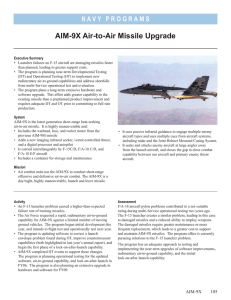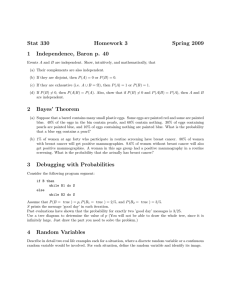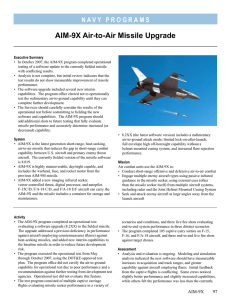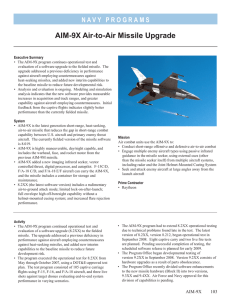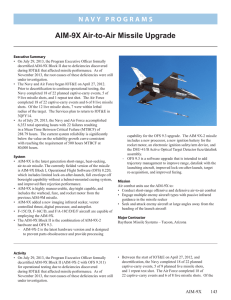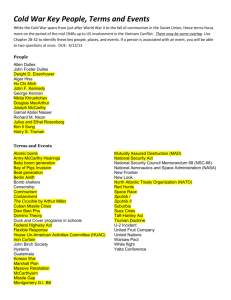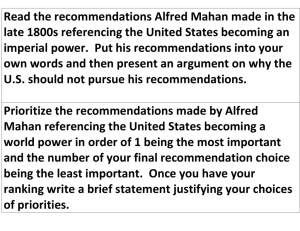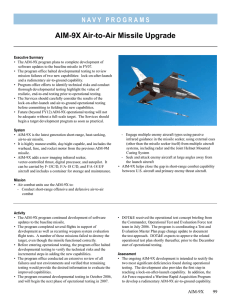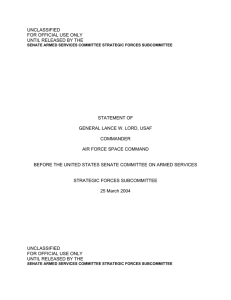T AIM-9X Sidewinder Air-to-Air Missile NAVY PROGRAMS
advertisement
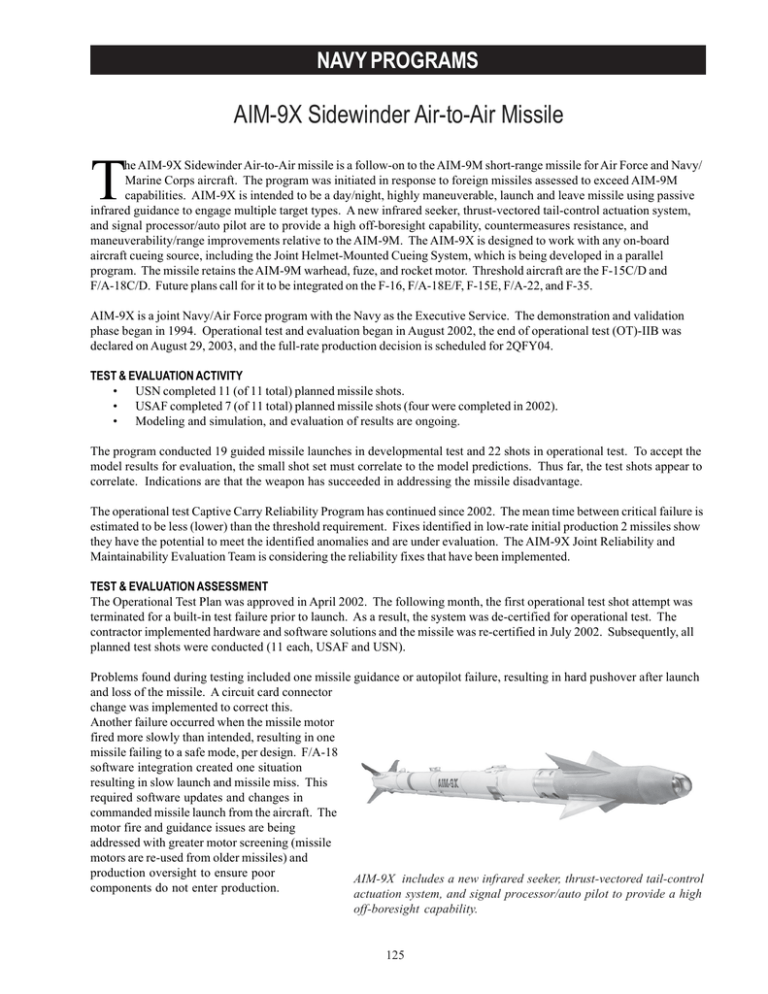
NAVY PROGRAMS AIM-9X Sidewinder Air-to-Air Missile T he AIM-9X Sidewinder Air-to-Air missile is a follow-on to the AIM-9M short-range missile for Air Force and Navy/ Marine Corps aircraft. The program was initiated in response to foreign missiles assessed to exceed AIM-9M capabilities. AIM-9X is intended to be a day/night, highly maneuverable, launch and leave missile using passive infrared guidance to engage multiple target types. A new infrared seeker, thrust-vectored tail-control actuation system, and signal processor/auto pilot are to provide a high off-boresight capability, countermeasures resistance, and maneuverability/range improvements relative to the AIM-9M. The AIM-9X is designed to work with any on-board aircraft cueing source, including the Joint Helmet-Mounted Cueing System, which is being developed in a parallel program. The missile retains the AIM-9M warhead, fuze, and rocket motor. Threshold aircraft are the F-15C/D and F/A-18C/D. Future plans call for it to be integrated on the F-16, F/A-18E/F, F-15E, F/A-22, and F-35. AIM-9X is a joint Navy/Air Force program with the Navy as the Executive Service. The demonstration and validation phase began in 1994. Operational test and evaluation began in August 2002, the end of operational test (OT)-IIB was declared on August 29, 2003, and the full-rate production decision is scheduled for 2QFY04. TEST & EVALUATION ACTIVITY • USN completed 11 (of 11 total) planned missile shots. • USAF completed 7 (of 11 total) planned missile shots (four were completed in 2002). • Modeling and simulation, and evaluation of results are ongoing. The program conducted 19 guided missile launches in developmental test and 22 shots in operational test. To accept the model results for evaluation, the small shot set must correlate to the model predictions. Thus far, the test shots appear to correlate. Indications are that the weapon has succeeded in addressing the missile disadvantage. The operational test Captive Carry Reliability Program has continued since 2002. The mean time between critical failure is estimated to be less (lower) than the threshold requirement. Fixes identified in low-rate initial production 2 missiles show they have the potential to meet the identified anomalies and are under evaluation. The AIM-9X Joint Reliability and Maintainability Evaluation Team is considering the reliability fixes that have been implemented. TEST & EVALUATION ASSESSMENT The Operational Test Plan was approved in April 2002. The following month, the first operational test shot attempt was terminated for a built-in test failure prior to launch. As a result, the system was de-certified for operational test. The contractor implemented hardware and software solutions and the missile was re-certified in July 2002. Subsequently, all planned test shots were conducted (11 each, USAF and USN). Problems found during testing included one missile guidance or autopilot failure, resulting in hard pushover after launch and loss of the missile. A circuit card connector change was implemented to correct this. Another failure occurred when the missile motor fired more slowly than intended, resulting in one missile failing to a safe mode, per design. F/A-18 software integration created one situation resulting in slow launch and missile miss. This required software updates and changes in commanded missile launch from the aircraft. The motor fire and guidance issues are being addressed with greater motor screening (missile motors are re-used from older missiles) and production oversight to ensure poor AIM-9X includes a new infrared seeker, thrust-vectored tail-control components do not enter production. actuation system, and signal processor/auto pilot to provide a high off-boresight capability. 125 NAVY PROGRAMS While design problems and test issues contributed to a prolonged test program, the most significant delays were caused by test support resource shortfalls. Poor availability of QF-4 target drones, range airspace, and test squadron aircraft delayed the program. The support priority given to real world combat operations had a particularly strong impact on the Navy’s portion of the testing, but both services did complete testing. Modeling and simulation, in conjunction with flight testing, is key to the development and evaluation of the AIM-9X. Due to this missile’s expanded capabilities and the high cost of launches, a family of simulations is used to assess missile performance across a wide spectrum of engagements encompassing various threats, backgrounds, and countermeasures. Actual missile firings validate the simulations. The simulations then assess the required probability of a kill against the threat targets. Simulation initiatives allow the number of guided test missiles to be significantly reduced. The final operational test report is currently being prepared by the Air Force Operational Test and Evaluation Center and OPTEVFOR. DOT&E will prepare the beyond low-rate initial production report with a goal of supporting a Milestone III review in 2QFY04. 126

